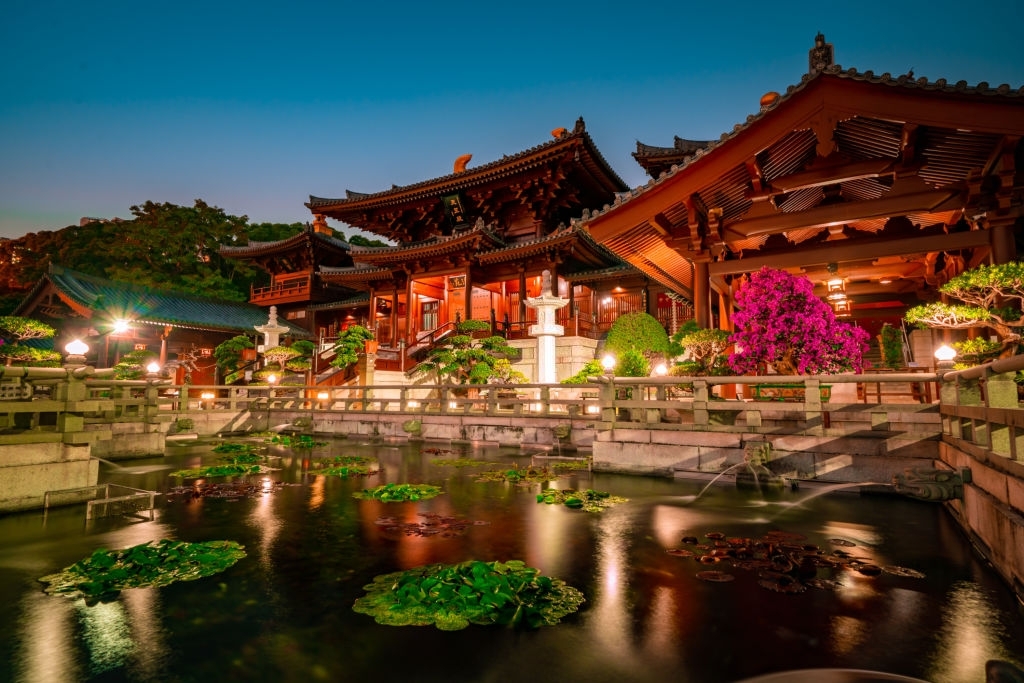
Chinese landscape design is more than 3000 years old, but its techniques and concepts do not lose their relevance and continue to influence the garden art of different countries. What is a Chinese-style garden?
Features of a Chinese Garden Design
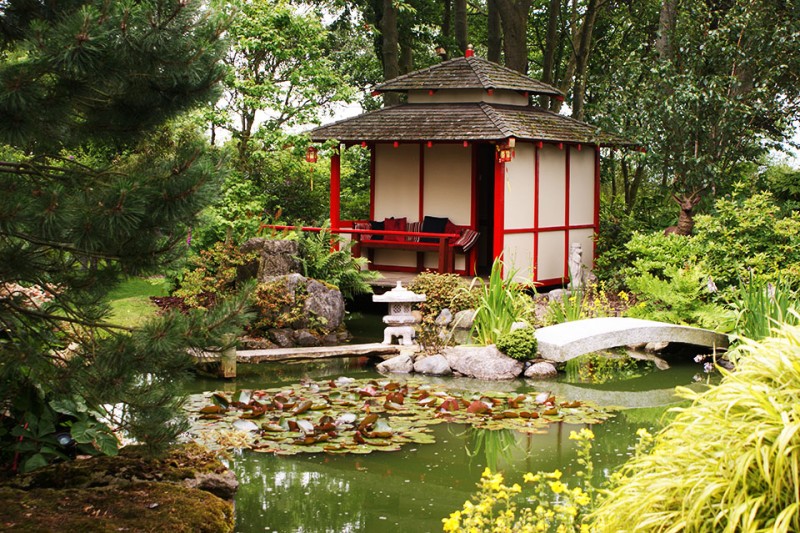
A traditional garden in China is the embodiment of the unity of nature and man. Each corner of the garden is a model of a natural landscape, slightly improved by the gardener. The Chinese style in landscape design necessarily includes four elements:
- water (personifies living and constantly changing nature);
- stones (emphasize stability and strength);
- plants (responsible for beauty, texture, and meaning);
- architecture (provides space for reflection, conversation and relaxation).
All of them should be harmoniously combined, creating a feeling of a natural landscape. In addition to these elements, a Chinese-style garden is different:
- Softness and naturalness of lines and shapes: winding paths, smooth landings, roofs in the form of boats.
- All-season: plantings and buildings are planned, considering their presentability at different times of the year and day.
- The effect of surprise: the landscapes unfold gradually, keeping the intrigue until the very end of the route.
- Feng shui layout: the sides of the light and their meanings are taken into account.
- Integrity and completeness of compositions.
- Natural materials in the design.
- An abundance of water and stones.
- relief: flat lawns give way to hills, ravines, and rocky areas;
- The presence of viewing platforms: they are arranged on small hills.
- Philosophical implication: each garden object has semantic meaning.
History
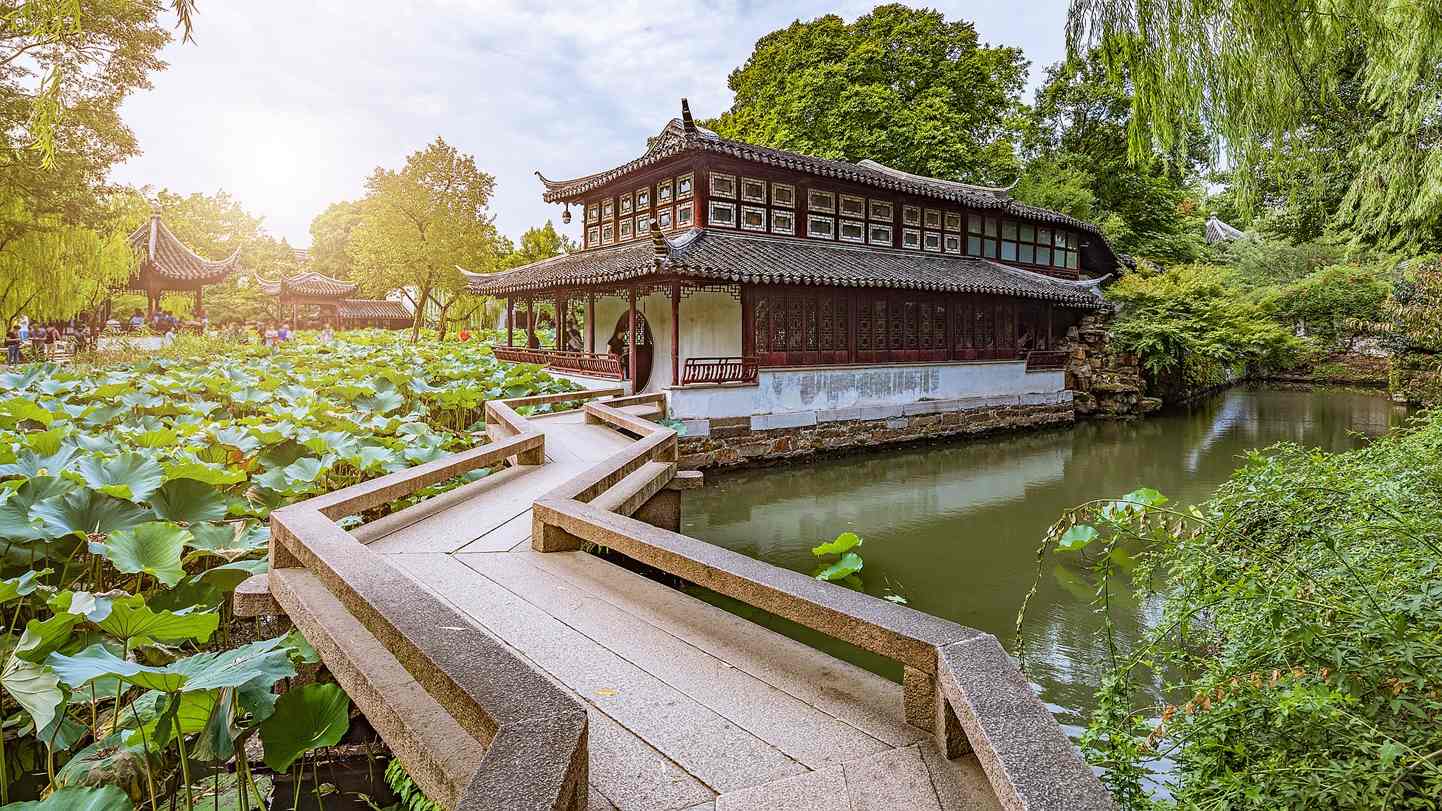
The development of landscape design in China is closely related to the culture and history of a particular dynasty. Gardens were created not only by rulers but also by scientists, poets, philosophers, politicians. They meditated, contemplated, held holidays, important meetings, and tea drinking, and studied painting and music in the gardens. Below are the key milestones in the development of garden art in China:
| Dynasty Name | Time | Garden Features | Example Of |
| Shang | 1600-1046 BC. | Three types: Yo is a royal garden with animals and birds, Pu – a vegetable garden, The yuan is the backbone of a Chinese walking garden with walls, a pond, and ornamental plants. | Garden Terrace, Spirit Park, King Wenwan Pond. |
| Qin | 221-206 biennium BC. | It is based on the yuan symbol. It is a mini-garden in the shape of a square with a plantation and a pomegranate tree. | Ying Zheng’s Garden (Eight Immortals). |
| Chunqiu | 722-481 BC. | Gardens on the side of the mountain with terraces connected by galleries. In the center, there is a lake with boats in the form of blue dragons. | Shanghai Terrace, Gusu Terrace. |
| Han | 206 BC – 220 AD | A combination of botanical, zoological, and traditional hunting grounds. | Emperor Wu Park, General Liang Ji’s Garden. |
| Transition Period | 221-618 N.E | Winding streams, gazebos, stone collections, the proximity of temples. | Garden of the Golden Valley, Garden of the West. |
| Tan | 618–907 – the golden period in the history of gardens | Gardens with replicas of mountains and ponds, with observation houses and gazebos. | Emperor Xuanzong Garden, Gente Valley Garden. |
| Sung | 960-1279 | Large architectural objects, lake, large stones, mountains. | Garden of the Pool of Pure Gold, Garden of the Monastery of Heavenly Rulers. |
| Yuan | 1279-1368 | Large ponds with fish, streams, grotesque rocks, fountains | Summer Palace and Garden of Kublai Khan, Lion Grove Garden. |
| Min | 1368-1644 | Lotus pond, high mountains, and buildings on a hill, an island in the shape of a boat, the principle of “borrowed gaze” (take into account the landscape behind the garden). | Humble Administrator’s Garden, Lingering Garden, Cultivation Garden, |
| Qing | 1644-1912 | Expensive materials, exquisite decoration of buildings and paths, rare varieties of plants. | Summer Palace, Old Summer Palace, Chengde Mountain Resort. |
Types of Chinese Gardens
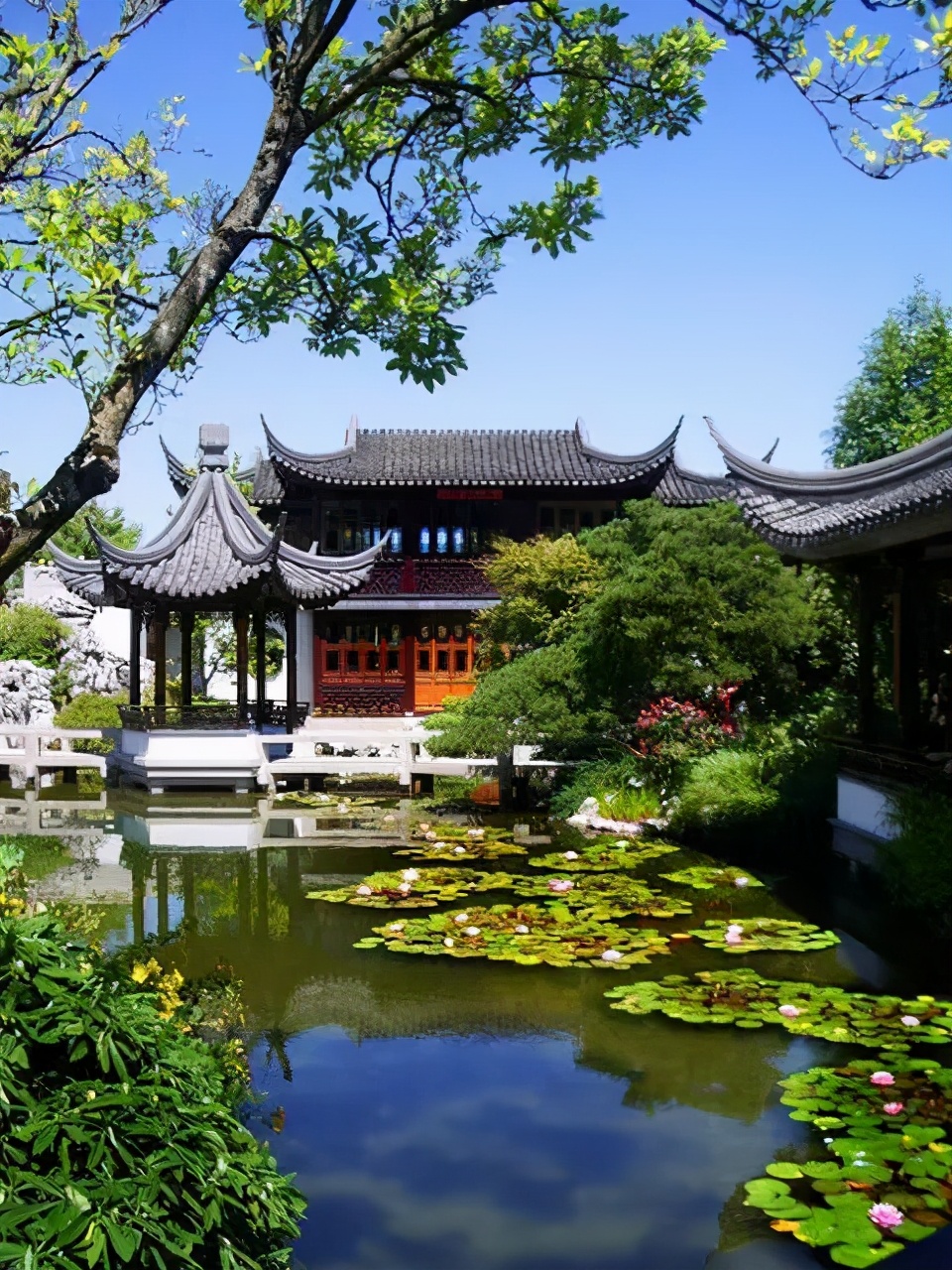
Each of the Chinese gardens is unique, and there are no strict rules for their arrangement. The main thing is the presence of inner harmony. The rest reflects the experience, taste, knowledge of the gardener and the traditions of the region. According to the place and manner of creation, six historical types of gardens are distinguished:
- At the imperial palaces.
- At the imperial tombs.
- At temples.
- With a natural landscape.
- Homemade.
- Gardens of scientists.
But there is a simpler typology:
- Miniature Garden – was set up in a small area with a gazebo or pavilions, bridges, ponds, imitation of rocks and caves, rare species of trees and flowers.
- Large Garden – are designed on vast areas with large relief, huge bodies of water, mountains, streams, waterfalls.
Philosophy
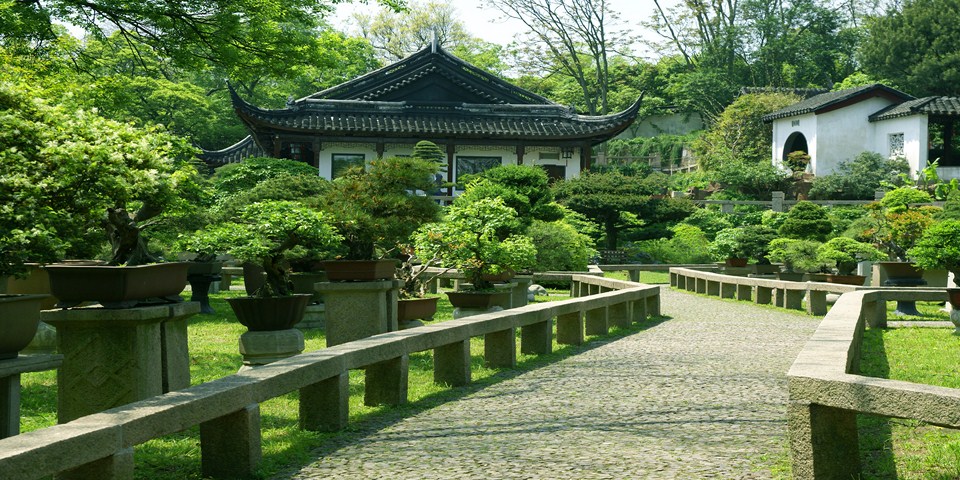
Chinese landscape design is based on the foundations of the religion of Taoism and the teachings of Confucius. According to the first direction, a garden is a place for enlightenment and by contemplating the unity of the creations of nature and man. Here, like yin and yang, two opposites complement each other – stones and water. Together they maintain natural balance and fight chaos.
The Chinese-style garden is the prototype of the magical gardens of immortality from ancient legends that can point to paradise, the lost world, and universal infinity. Walking in the garden evokes an idyllic feeling of wandering through a wild landscape, searching for spiritual food, natural wisdom, and self-discovery.
Chinese Garden Layout
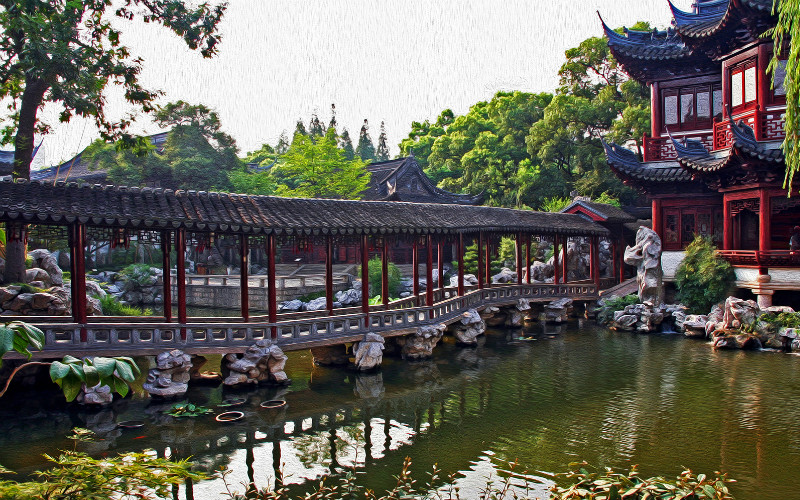
The Chinese-style garden opens up to the view gradually, creating the illusion of infinity. It consists of a cascade of landscapes that mimic natural landscapes. Instead of clear straight lines, it is based on asymmetry and smoothness.
Feng Shui Rules
Landscaping in the Chinese style is subject to the principles of feng shui, according to which each part of the world is responsible for a specific area of life. The correct arrangement of the garden has a positive effect on the inner strength and energy of its owner:
- South (love) – denoted with a red palette and fire, hang traditional lamps, plant scarlet flowers.
- North (work, career) – decorated with stones, water, black and blue shades.
- West (friendship) – there is a lot of metal and white in the decoration.
- East (thinking, learning) – plant a branchy tree and an abundance of different plants.
- The garden’s center (mental and physical health) – creates a reservoir with an artificial mountain or island.
Natural Scenes
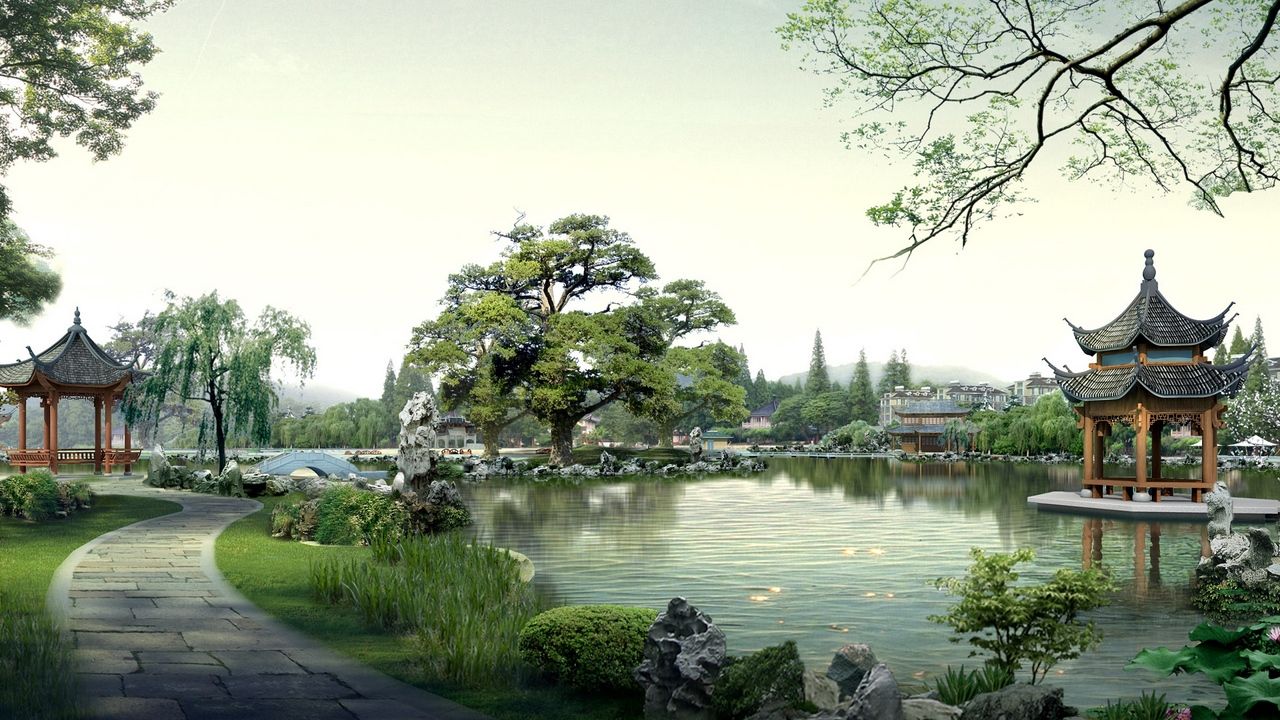
A classical Chinese garden plan consists of a series of perfectly arranged and framed landscape fragments: a view of a mountain, a tree, a pond, a bamboo grove, a flowering bush, or a pagoda.
While wandering through the Chinese garden, a person comes across several secluded corners to view a specific landscape scene. Each one is well planned and decorated. Walking through the garden should feel like an adventure, not a known route.
Paving and Paths
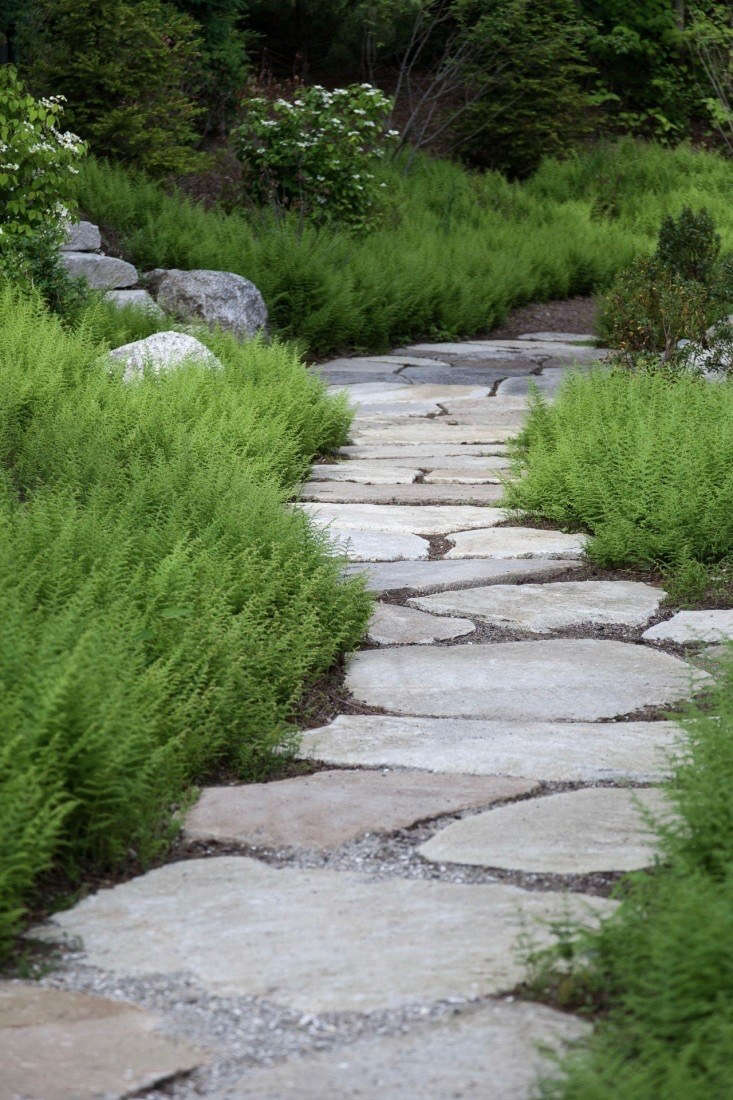
Like nature trails, they are full of twists and turns. The paths in the Chinese garden follow the natural landscape rather than trying to change it. For paving, exclusively natural materials are used (wooden boards, stones with natural edges, bricks), harmoniously combined with the garden landscape.
Fencing
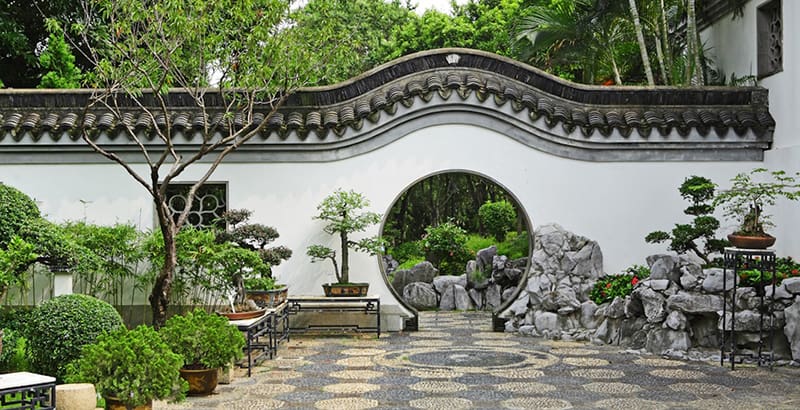
High white walls surrounded a classical garden in China. They create a beautiful contrasting backdrop for plants and buildings. The wall is responsible for privacy and silence in the garden, as well as its internal fences. Their role is played by trees, shrubs, streams, buildings. Dividing the area makes its elements brighter and more expressive.
Borrowed Scenery
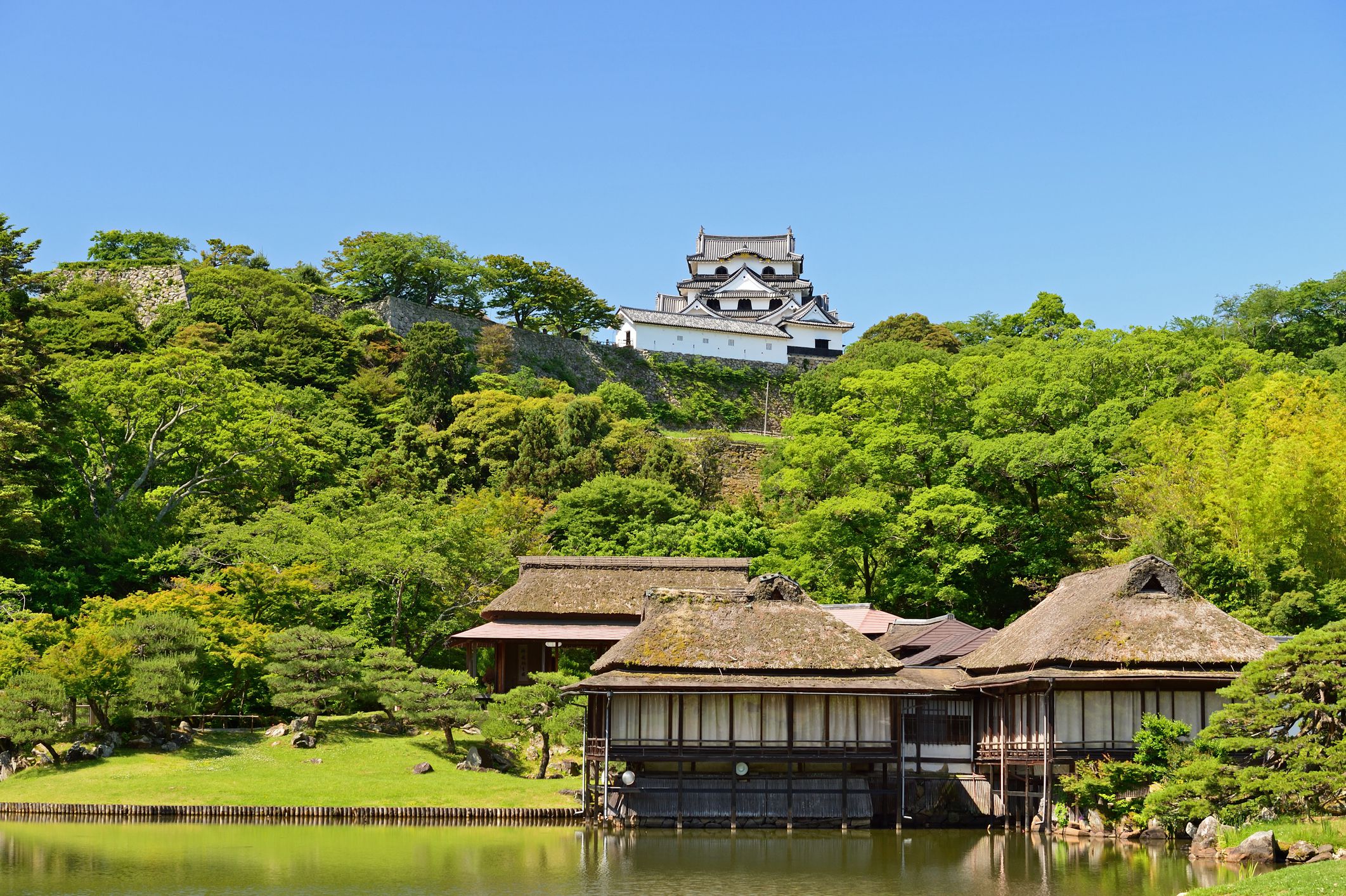
An important aspect of the traditional Chinese garden is borrowing the surrounding landscape (“jing”). When planning a site, it must consider the natural elements outside the garden walls (mountains, forests, fields). These species often appear in the garden unexpectedly, but in fact, everything is carefully and thought out in advance. This technique emphasizes the boundlessness of the garden and makes it part of the natural landscape.
Natural Elements
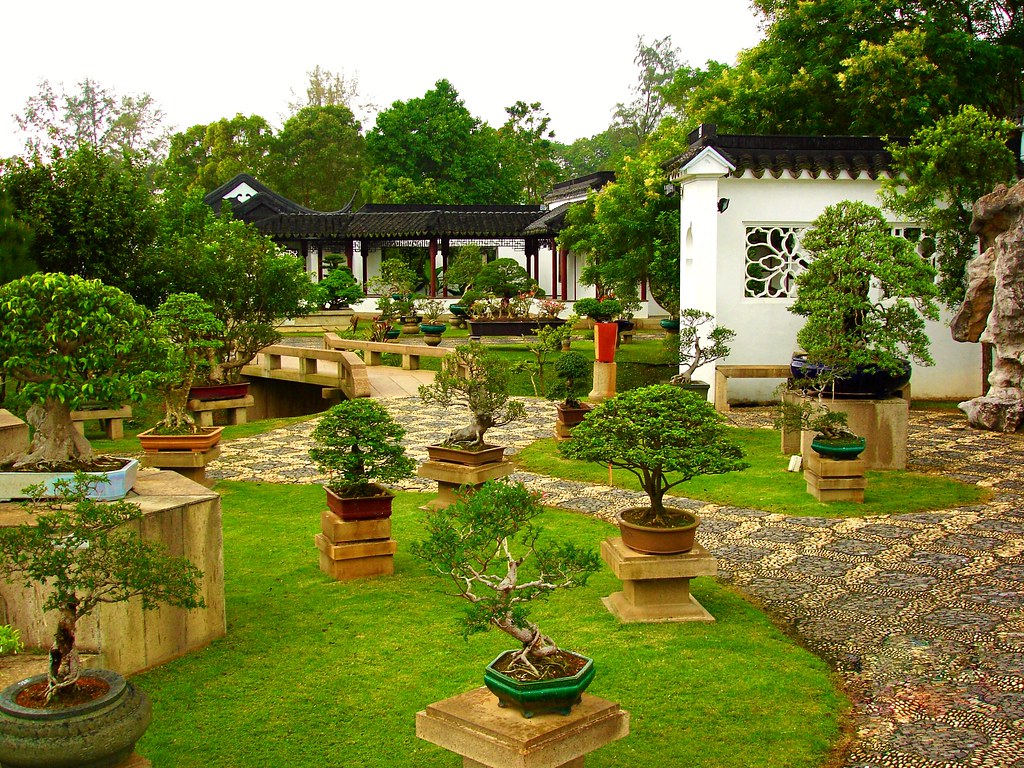
The Chinese style of the garden strives for natural harmony, and therefore, in terms of size and location, its elements should complement each other and not compete.
Water
The centerpiece of a traditional Chinese garden is a pond or lake. An artificial mountain is being built nearby, or it can be seen in the distance behind the fence. In shape, the reservoir should be vague, uneven, surrounded by stones, buildings, and vegetation. It is desirable that it was impossible to see all the corners of the lake from one shore, which creates the illusion of its infinity.
If the garden’s territory allows, there can be several ponds (including fountains and streams), but one should be central and largest. It will be great if wooden arches of bridges complement the reservoirs. Fish of golden, red shades are launched inside the lake, and lotuses are planted. All other garden elements are located around the ponds.
Plants
They soften the harsh lines of architectural structures and stones. When choosing them, it is important to pay attention to:
- Shape
- Texture
- Colour
- Aroma
- Meaning
Traditional Chinese Garden Plants:
| Trees | Shrubs | Herbs and Flowers |
| Pine Pear Appletree Cherry Plum Garnet Apricot Peach Dwarf trees | Chinese plum Willow Jasmine Magnolia Hydrangea Almond Lilac Lagerstroemia Wisteria | Bamboo Banana Lotus Pion Orchid Chrysanthemum Forsythia Tulip Roses Irises |
The Chinese pay attention to the sounds that plants can make under the influence of natural elements: the sound of rain on leaves, wind in bamboo, rustle of grass. Dwarf trees with strongly curved trunks and branches are famous for creating miniature landscapes. They are placed on stone pedestals placed on accessible areas of the lawn.
Stones
A stone object is an essential attribute of Chinese gardens. It can be like a rock in the middle of a pond, a rock garden, a tall rockery, or just boulders on a lawn. In large areas, a large artificial mountain with a pavilion on top is often created.
Architecture
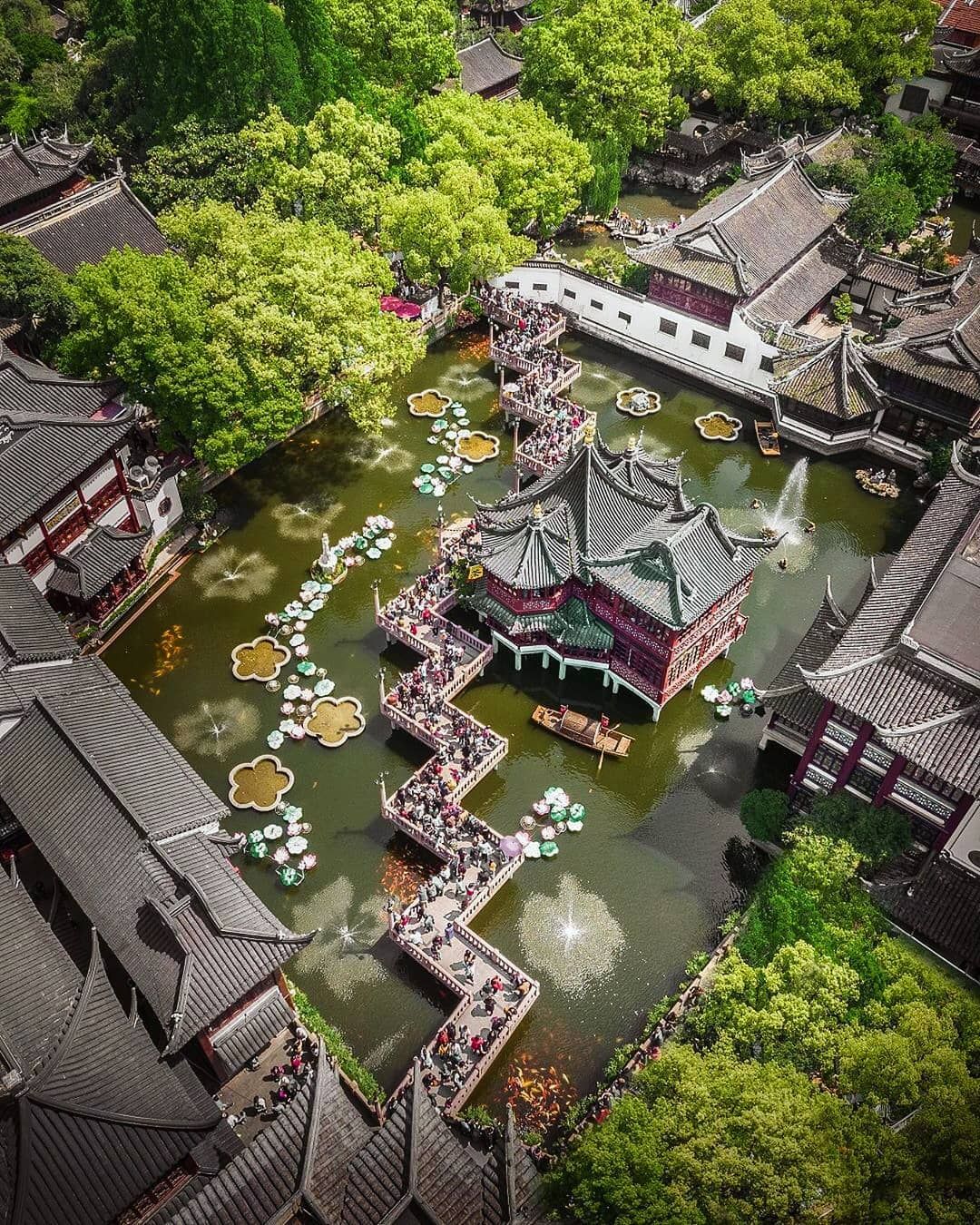
In a classical Chinese garden, there are many different structures, the scale of which depends on the size of the territory, and their purpose depends on the owner’s needs. Among the traditional buildings:
- Hall for celebrations and ceremonies (ting) with a courtyard
- A pavilion surrounded by a veranda (yes ting) for meeting guests.
- A flower greenhouse (Hua ting) with a rock garden next to the house.
- Xi’an Pavilion (Xi Mingin) with 4 movable walls to view the garden.
- Lotus pavilion (he hua ting) next to the pond.
- Two-story observation towers (ge and lu).
- Libraries.
- Temples, pagodas.
In addition to large buildings, some are smaller:
- Stone gazebos in the shape of a boat by the pond.
- Wooden gazebos for shelter from the sun and rain in the thickets of the garden.
- Closed courtyards for tea drinking, relaxation, and meditation.
- Stone or wooden bridges – arched, straight and zigzag.
- cottages in fishing huts for solitude and meditation.
- improvised gate.
Windows and doors are cut in the shape of a circle, oval, fruit, vase, and polygons complemented by elaborate ceramic framing. The buildings are connected, and the garden is divided into zones by narrow serpentine galleries (covered corridors).
Garden Decor
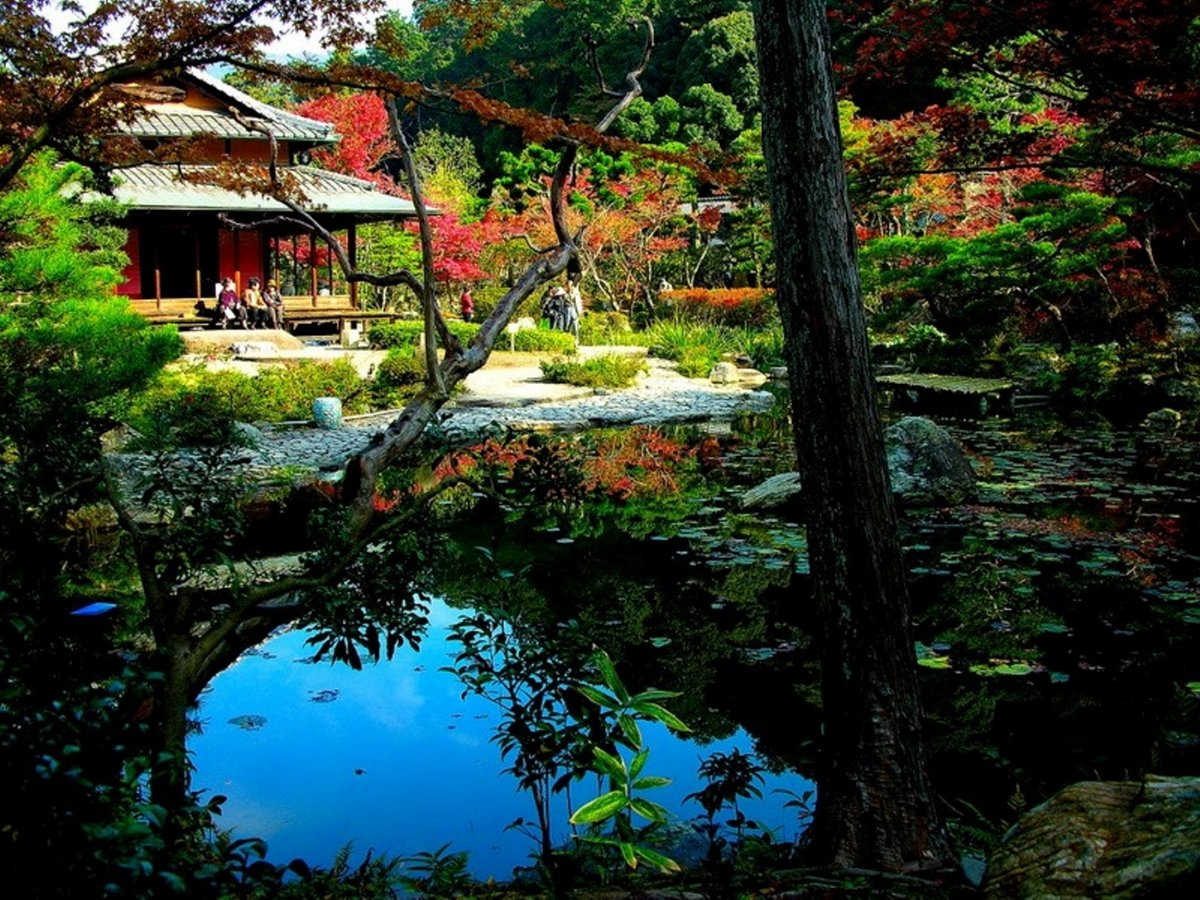
When decorating a Chinese garden, it is important to remember its discreet design with philosophical overtones. Best suited for its decor:
- Inscriptions: these can be signs, sayings of sages, hieroglyphs applied on free-standing boulders, walls or doors of buildings, bridges.
- Authentic garden furniture: Made from natural wood or stone, with a simple and slightly rough design, as if nature itself worked on it.
- Lanterns: traditional paper red with yellow silk tassels. They are placed throughout the garden: in galleries, ponds, and on verandas.
- Stone pedestals with dwarf trees: they are used to decorate lawns, lines along the paths.
- Statues: images of dragons, lions, fish, turtles, elephants, birds.
- Ceramics: volumetric rounded vases, pots, jugs.
- Feng Shui talismans: “music of the wind,” “sound of rain,” “coins of happiness.”
According to the Chinese, the ideal garden can only come about when the forces of nature and human genius interact and complement each other.






